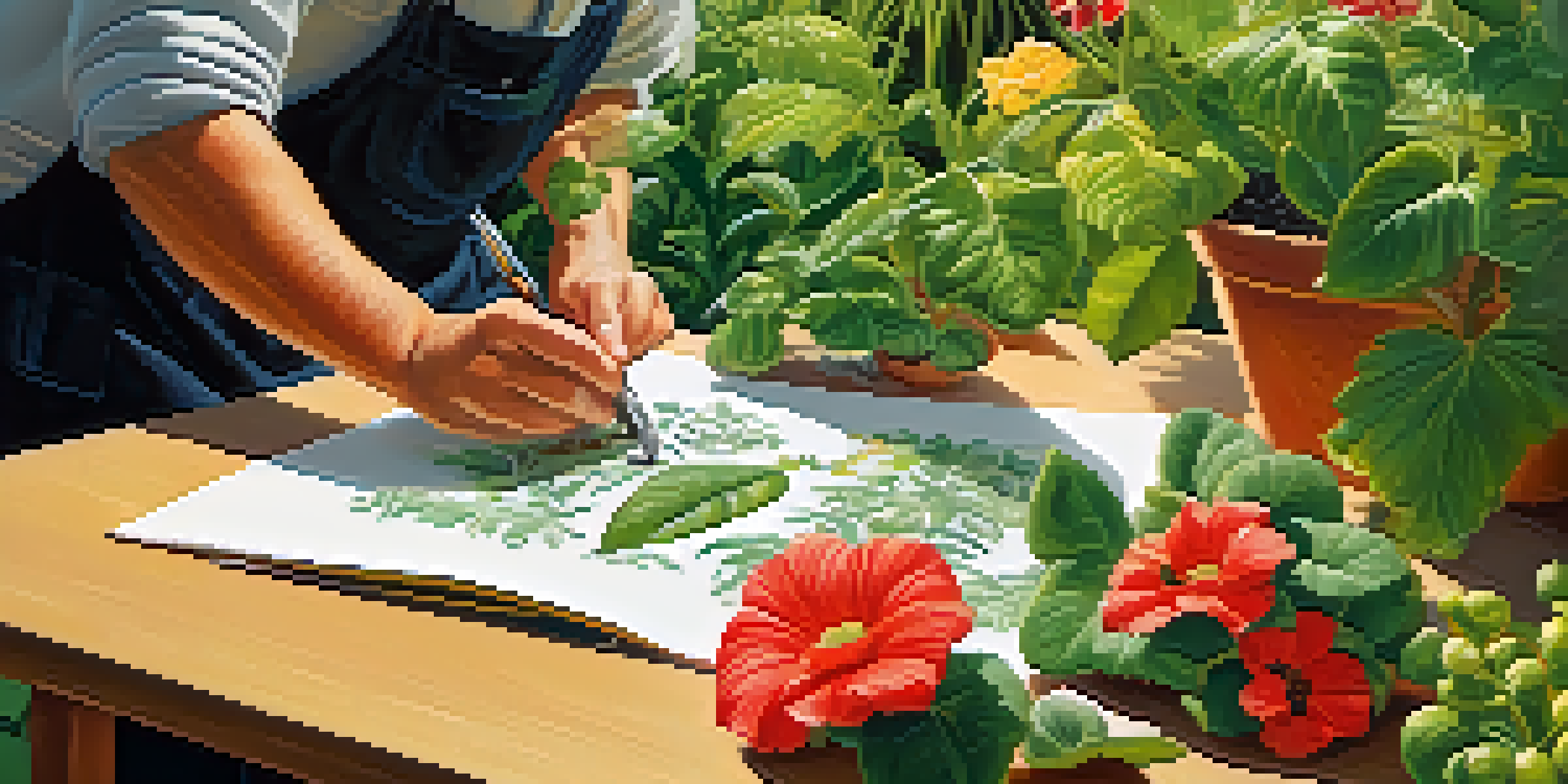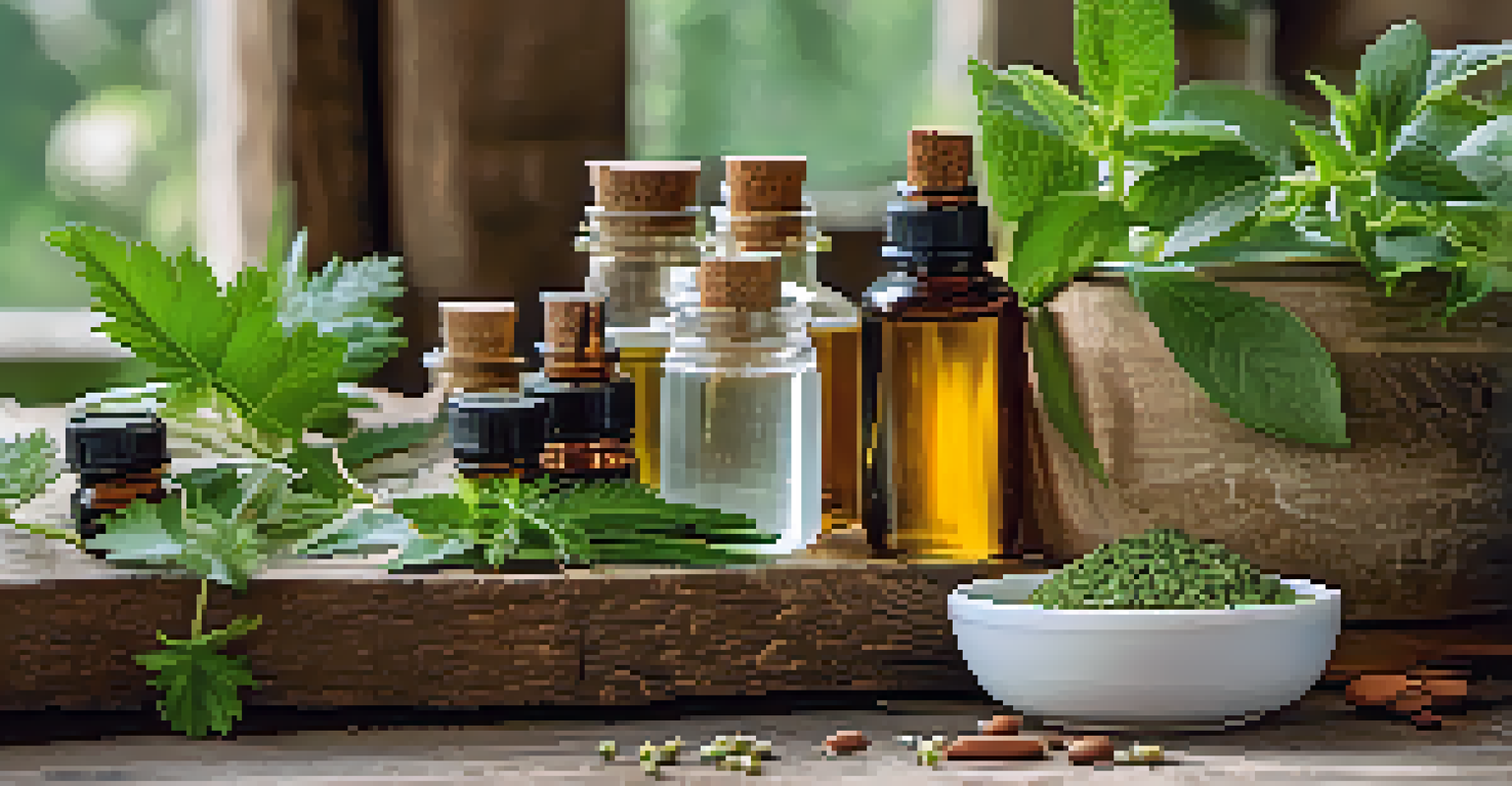How to Treat Common Plant Pests: Effective Home Solutions

Identifying Common Plant Pests in Your Garden
Before you can treat plant pests, it’s essential to identify them. Common pests like aphids, spider mites, and whiteflies can wreak havoc on your plants. Look for signs such as discolored leaves, webbing, or tiny bugs on the undersides of leaves.
The best way to control pests is to prevent them from becoming a problem in the first place.
A good way to spot these invaders is to inspect your plants regularly, ideally once a week. This not only helps in early detection but also prevents a minor issue from turning into a full-blown infestation. Remember, the sooner you catch them, the easier they are to manage.
You might also consider keeping a pest identification guide handy. This can help you understand the specific pests that threaten your plants and guide you on how to treat them effectively.
Natural Remedies: Soap and Water Solutions
One of the simplest and most effective home solutions for treating pests is a soap and water mixture. Just mix a few drops of mild liquid soap with water in a spray bottle and apply it directly onto the affected plants. This solution suffocates soft-bodied insects like aphids and mealybugs.

Make sure to test the solution on a small part of the plant first to ensure it doesn’t cause any damage. Spray the affected areas thoroughly, focusing on the undersides of leaves where pests often hide. Repeat this process every few days until you notice a significant decline in pest activity.
Identify Pests Early for Success
Regular inspections of your plants help catch pests like aphids and spider mites early, making them easier to manage.
This method is not only easy to make but also safe for your plants and the environment. Plus, it’s a great way to avoid using harsh chemicals that can harm beneficial insects.
Creating Your Own Neem Oil Spray
Neem oil, derived from the seeds of the neem tree, is a powerful natural pesticide. To create a neem oil spray, mix two tablespoons of neem oil with a gallon of water and a few drops of dish soap in a spray bottle. This solution disrupts the lifecycle of pests and prevents them from feeding.
Gardening is a way of showing that you believe in tomorrow.
Using neem oil is effective against a variety of pests, including spider mites, whiteflies, and thrips. Apply it in the early morning or late afternoon to avoid potential leaf burn from the sun. Ensure you cover all plant surfaces for the best results.
This eco-friendly option not only helps control pests but can also promote overall plant health. Neem oil has antifungal properties, making it a dual-purpose treatment for your garden.
Using Essential Oils to Deter Pests
Essential oils are not just for aromatherapy; they can also be a valuable tool in pest control. Oils like peppermint, lavender, and eucalyptus are known for their pest-repelling properties. Simply mix a few drops of your chosen essential oil with water in a spray bottle and apply it to your plants.
These natural scents can deter pests while being pleasant for you and safe for beneficial insects. Plus, they add an aromatic touch to your gardening routine! Just remember to reapply after rain or watering.
Natural Remedies for Garden Pests
Using simple solutions like soap and water or neem oil can effectively control pests while being safe for your plants and the environment.
Experimenting with different essential oils can yield great results, as some pests may respond better to certain scents. It’s a fun way to find what works best for your garden.
Companion Planting: Nature’s Pest Control
Companion planting is a gardening technique where certain plants are grown together to enhance growth and deter pests. For example, marigolds are known to repel nematodes and other harmful insects. By strategically placing these plants near your vulnerable flowers or vegetables, you can create a natural barrier against pests.
This method not only helps in pest control but also promotes biodiversity in your garden. It encourages beneficial insects, such as ladybugs and lacewings, which can help keep pest populations in check.
Researching companion plants for your specific garden can lead to healthier plants and less reliance on chemical treatments. It’s a win-win for you and the environment!
Hand-Picking: A Simple Yet Effective Method
Sometimes, the simplest method is the most effective. Hand-picking pests off your plants can be surprisingly productive, especially for larger pests like caterpillars and beetles. Spend a few minutes each day inspecting your plants and removing any visible bugs you find.
This method is especially useful for small gardens or container plants, where infestations are easier to manage. Just be sure to wear gloves and dispose of the pests properly to prevent them from returning.
Healthy Plants Resist Infestations
Maintaining strong plant health through proper care reduces susceptibility to pests and promotes a thriving garden ecosystem.
Hand-picking not only helps control the pest population but also gives you a closer look at the health of your plants. Plus, it can be a therapeutic activity for many garden lovers.
Maintaining Plant Health to Prevent Pests
Preventing pests is often easier than treating them. Keeping your plants healthy through proper watering, adequate sunlight, and fertilization can make them less susceptible to pest infestations. Strong, healthy plants are better able to withstand pest attacks and recover more quickly if they do occur.
Regularly pruning dead or yellowing leaves can also help improve air circulation and reduce the chances of pest issues. It’s all about creating an environment where pests feel unwelcome.

Additionally, rotating your crops each season can disrupt the lifecycle of pests and prevent them from establishing a home in your garden. A little proactive care goes a long way!